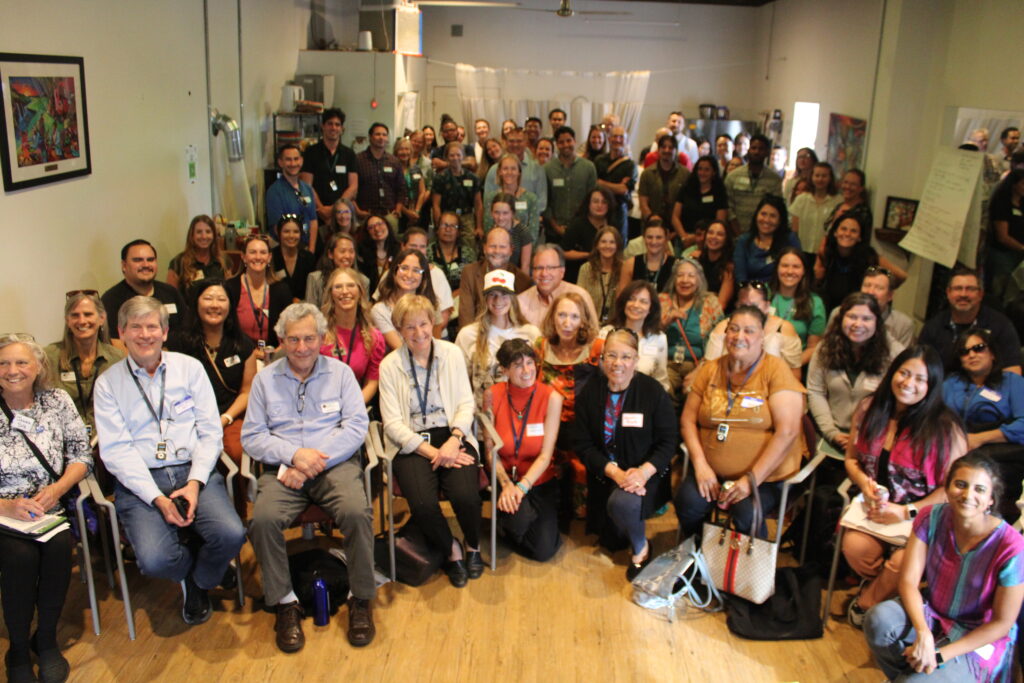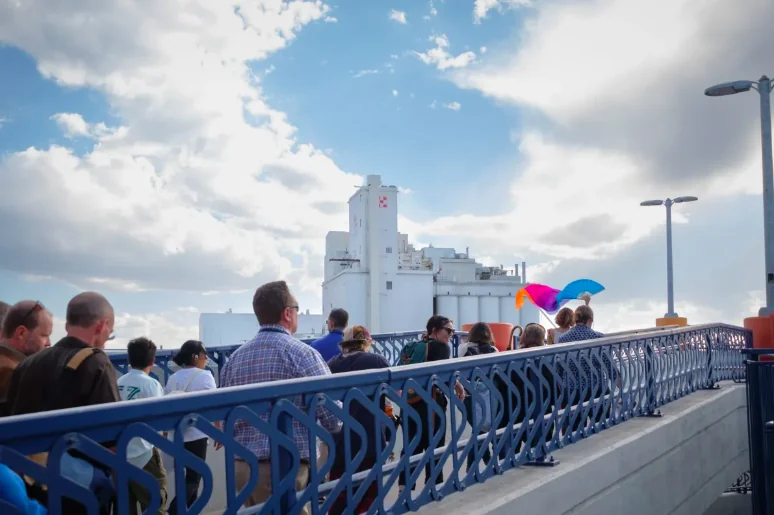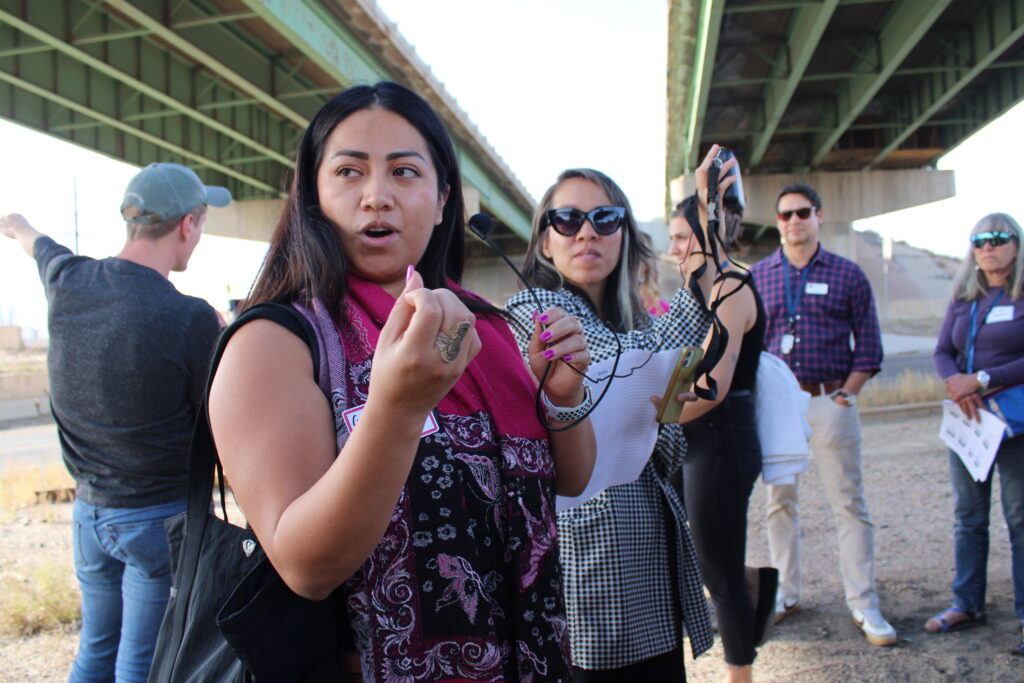|
Getting your Trinity Audio player ready...
|
Prioritizing Communities in Rulemaking
Earthworks centers our advocacy work with frontline communities in Colorado around a simple but powerful principle: community voices and experiences should be prioritized over the polluting industry. Unfortunately, this principle is rarely reflected in decision-making spaces. In the state legislature or at regulatory hearings, polluters continue to gain the balance of power even when community members successfully win seats at the table.
Therefore, it is a victory worth celebrating when the weight of community data and experience is rightfully uplifted and has a real impact on a ruling. Change can be made to happen through community organizing, data-gathering, and storytelling prowess.
In January, Cultivando and The Green House Connection Center (The GHCC) appeared before the Air Quality Control Commission (AQCC) during a rulemaking. The Commission was tasked with identifying a set of toxic air pollutants to prioritize for additional oversight and regulation. Cultivando, The GHCC, and impacted community members formed a coalition – Communities Organized for Clean Air (COCA) – which obtained party status in the rulemaking in order to make a formal presentation to the commission and bring community testimony directly to the decision-making table.
The coalition presented evidence gathered from Cutlivando’s air quality monitoring project near Suncor’s Commerce City refinery. It added firsthand community testimony of health, educational, and economic impacts due to poor air quality and the continued degradation of the environment. The coalition argued that AQCC should prioritize toxics of particular concern to community members, namely benzene, hydrogen sulfide, and formaldehyde. These pollutants are associated with major polluters in Commerce City and North Denver, such as the Suncor refinery.
No one contested the fact that these pollutants are harmful to human health. But some industry parties predictably downplayed the validity of community testimony. Companies pushed back against the inclusion of hydrogen sulfide in particular by questioning Cultivando’s air quality monitoring data. However, in the end, the AQCC prioritized the air toxics that community members were concerned about and cited the need to take the community’s experiences seriously as the reason. This decision would not have happened without the efforts of COCA.
Moving forward, in upcoming rulemakings, the state will need to develop additional regulations targeting these toxics and the polluters that emit them. In turn, communities burdened with risk of harm will hopefully gain newfound leverage in fighting for clean air.
In other words, there is still much work yet to be done, but for now, it is important to reflect on how COCA achieved this significant win.


In Our Own Words: How COCA Worked To Build Power Through Human Connection and Relationships
Our coalition believes it’s imperative to lead with humanity and connection in policy and regulatory work. A key to the success of this rulemaking was building authentic relationships and bridges between community members and decision makers. Behind the scenes, community organizations, government staff, and passionate community leaders worked together for close to a year to cultivate a connection and relationship between impacted community and Commissioners.
Our hard work began to sprout in October 2024 with a collaborative in-person tour that brought AQCC staff, Commissioners, and the State Board of Health directly into one of the most polluted neighborhoods in the state. We were able to share with them firsthand experiences from impacted community members, highlight the air quality data collected by Cultivando, and take participants on the ground at Suncor to view pollution unseen with the naked eye with the help of Earthworks’ OGI camera. We were joined by many stakeholders including Denver’s Love My Air program, health experts, and medical students. Our efforts elevated the work of the Colorado Department of Public Health and Environment and street-level organizations alike.
The coalition recognizes the power of these in-person experiences where people can see the pollution, taste it on their tongues, smell it, and sometimes even feel the impacts in their bodies.
We were also encouraged and grateful that the AQCC provided simultaneous interpretation, food, transportation, and stipends for people to participate in this day, as there are many barriers that keep those most impacted from decision-making spaces.
After spending the afternoon with Commissioners on the tour, we noticed an immediate difference in how we were received in public comment, throughout this rulemaking, and at our party’s presentation to the AQCC. Our work proves the importance of human connection, and shows the trust that can be built when government entities invest in the communities they are charged to advocate for and protect.
One of our proudest moments of this process was having one of Cultivando’s Promotoras and an impacted North Denver resident presenting directly to the AQCC Commissioners. Many Commissioners thanked us for the opportunity to come and connect in person and honored the lived experience of those most impacted.


Next Steps
Now that the state has identified a set of air toxics to prioritize, the hardest work is still ahead. Upcoming rulemakings through 2026 will see the AQCC consider new health guidelines for these toxics as well as new reporting requirements, control measures, and permitting requirements for polluters that emit them.
The AQCC did the right thing and prioritized the voices of community members in kicking off this years-long process, and they need to continue to demonstrate this same leadership in the upcoming rulings on these toxics.
We need your help to ensure they do! Consider signing up for updates from both Cultivando and The GHCC to stay informed and learn all the ways you can support these important organizations and the communities they represent.
Now more than ever, Colorado has an opportunity to define itself on a national level as a state that advances environmental justice and puts people over polluters. More importantly, Colorado has an unfulfilled obligation to frontline communities that have suffered an undue burden from environmental pollution for far too long.
The state has demonstrated it is willing to listen, but is it willing to act?
